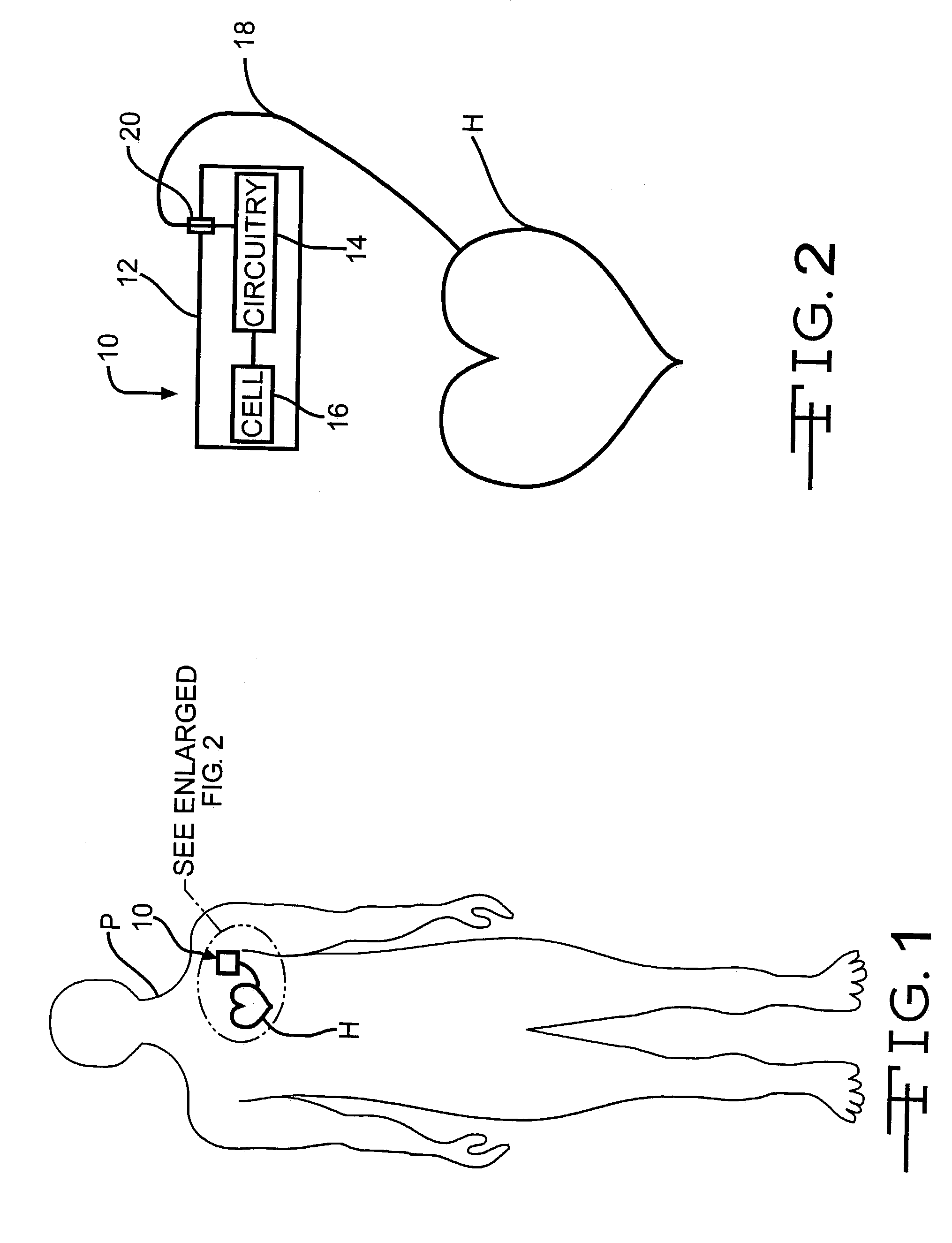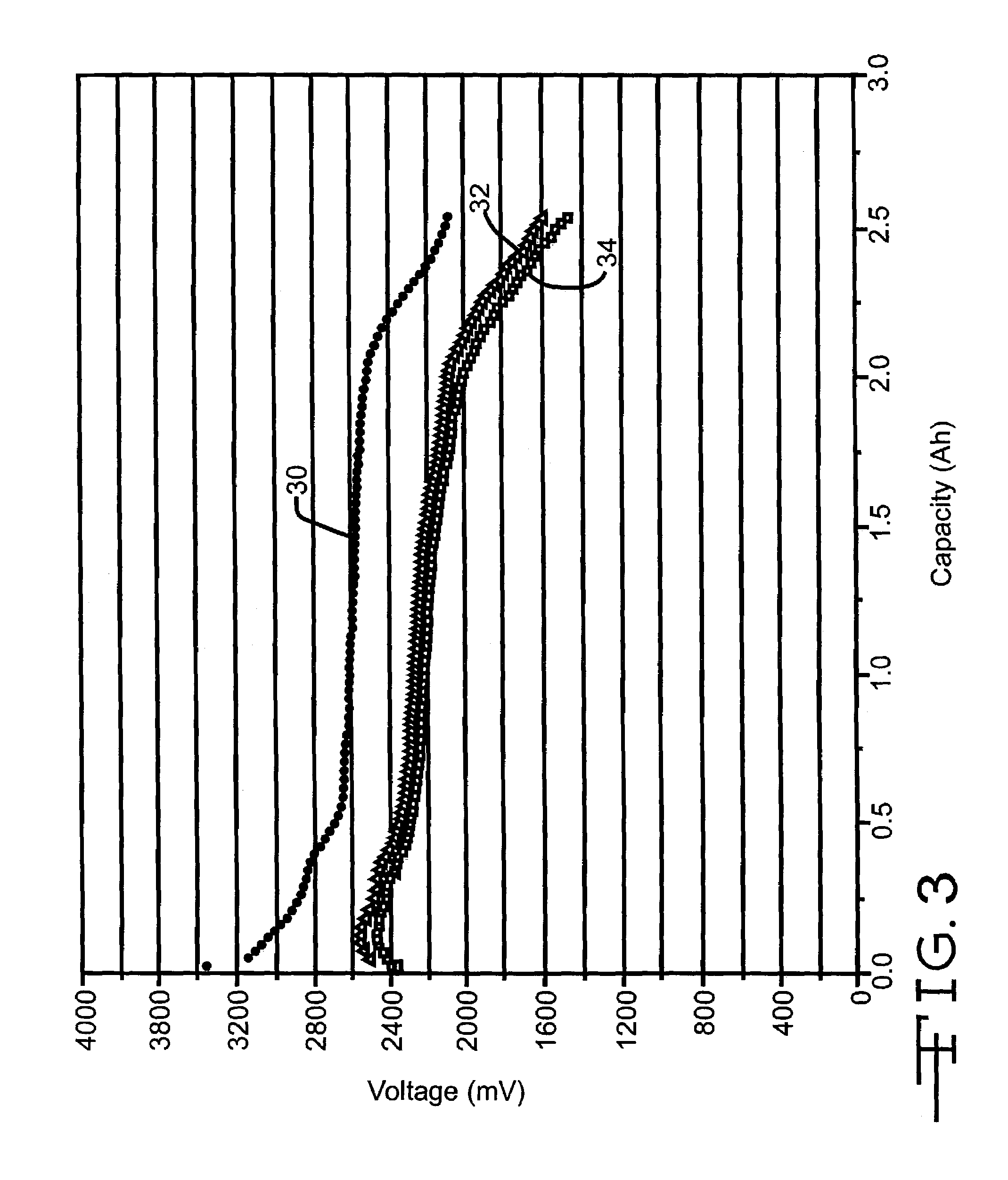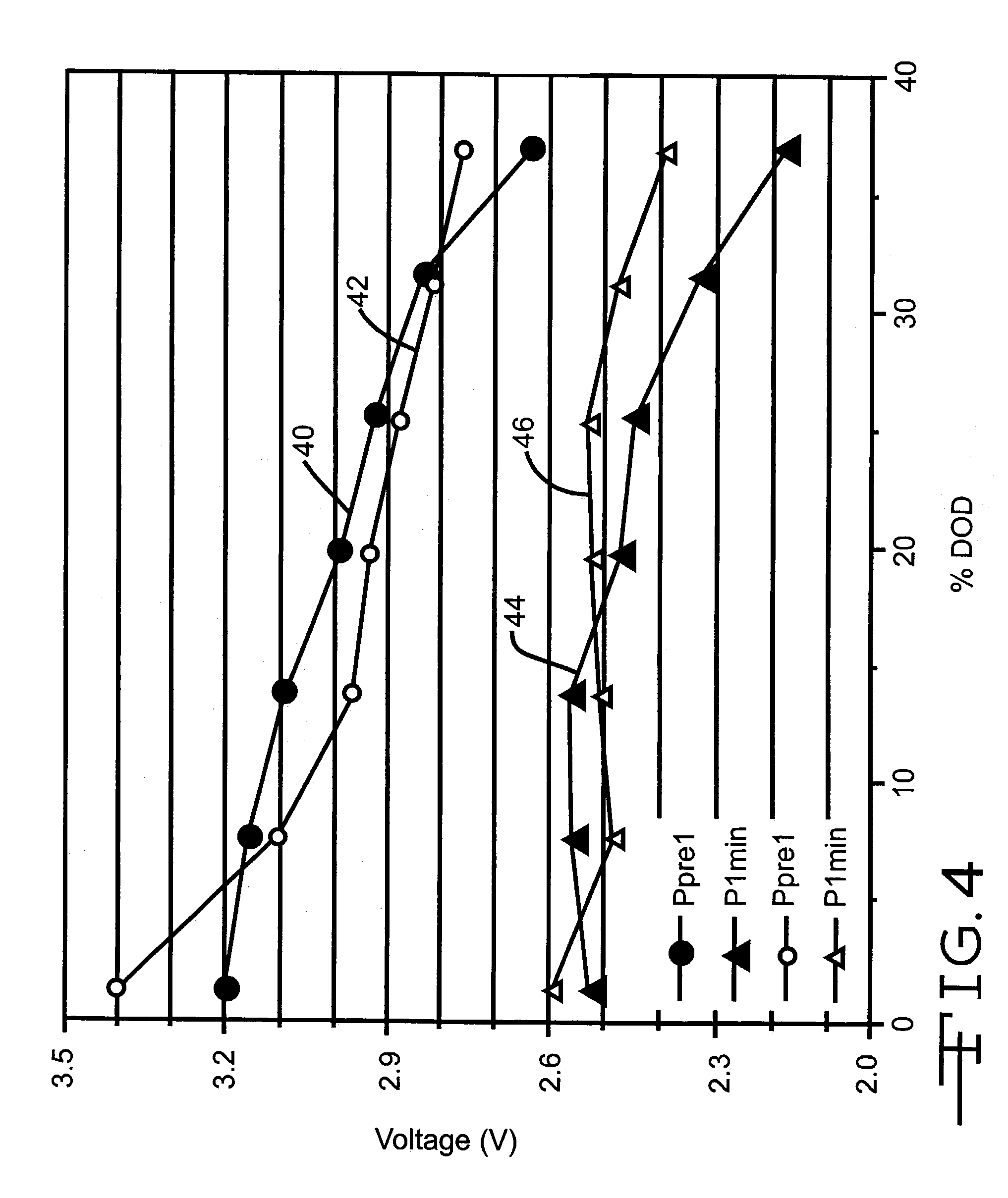Method for using high rate lithium electrochemical cell containing SVO/CFchi/SVo sandwich cathodes having gamma-SVO and mixture of gamma-SVO/epsilon-SVO
- Summary
- Abstract
- Description
- Claims
- Application Information
AI Technical Summary
Benefits of technology
Problems solved by technology
Method used
Image
Examples
example i
Discharge Voltage Profile of Cells with SVO / CFx Sandwich Cathode
[0048]Five cells were built containing anode electrodes of lithium metal pressed onto a nickel current collector screen. Cathodes were built having cathode active materials pressed onto two layers of titanium current collector screen to provide an electrode configuration of SVO / current collector / CFx / current collector / SVO. The SVO material used was ε-phase SVO with a stoichiometry formula of Ag2V4O11. A prismatic cell stack assembly configuration with two layers of microporous membrane polypropylene separator sandwiched between the anode and cathode electrodes was prepared. The electrode assembly was then hermetically sealed in a stainless steel casing in a case negative configuration and activated with an electrolyte of 1.0M LiAsF6+0.05M DBC / PC: DME=1:1 (DBC=dibenzyl carbonate). The theoretical capacity of the cells was 2.645 Ah.
example ii
Rdc and Power Capability Comparison of ε-SVO with γ-SVO
[0057]Six cells were constructed in a similar manner as those described in Example I except that the cathodes were constructed in the configuration of SVO / current collector / SVO and for the stoichiometry of the SVO material. In particular, three cells were built with ε-SVO having a stoichiometry formula of Ag2V4O11 (group 1) and three cells were constructed with γ-SVO having a stoichiometry formula of Ag1.6V4O10.8 (group 2). After burn-in and acceptance pulse train testing, these cells were discharged under a 22.1 kΩ load interrupted every 36 days by pulse trains consisting of four 10 second pulses having a cathode current density of 22.2 mA / cm2 with a 15 second rest between pulses. The average pulse train data of the initial 7 pulse trains is summarized in FIG. 4 (P1 min. comparison) and in FIG. 5 (P4 min. comparison). In particular, curves 40 and 42 in FIGS. 4 and 5 are the respective prepulse voltages for the groups 1 and 2 ce...
example iii
Rdc and Power Capability Comparison of ε-SVO with (γ+ε)-SVO
[0060]Nine cells were constructed in a similar manner as described in-Example II except for the stoichiometry of the SVO material. In particular, five cells were built having ε-SVO with stoichiometry formula of Ag2V4O11 (group 3) and four cells were constructed having a mixture of γ-SVO (45% mole) and ε-SVO (55% mole) with stoichiometry formula of Ag1.82V4O10.91 (group 4). After burn-in and acceptance pulse train discharge, these cells were discharged under a 16.5 kΩ load interrupted every 60 days by pulse trains consisting of four 10 second pulses having a cathode current density of 22.2 mA / cm2 with a 15 second rest between pulses. The average pulse train data from the initial 6 pulse trains is summarized in FIG. 8 (P1 min. comparison) and in FIG. 9 (P4 min. comparison). In particular, curves 80 and 82 in FIGS. 8 and 9 are the respective prepulse voltages for the groups 3 and 4 cells, curves 84 and 86 in FIG. 8 are of the p...
PUM
| Property | Measurement | Unit |
|---|---|---|
| Percent by mass | aaaaa | aaaaa |
| Percent by mass | aaaaa | aaaaa |
| Molar density | aaaaa | aaaaa |
Abstract
Description
Claims
Application Information
 Login to View More
Login to View More - R&D
- Intellectual Property
- Life Sciences
- Materials
- Tech Scout
- Unparalleled Data Quality
- Higher Quality Content
- 60% Fewer Hallucinations
Browse by: Latest US Patents, China's latest patents, Technical Efficacy Thesaurus, Application Domain, Technology Topic, Popular Technical Reports.
© 2025 PatSnap. All rights reserved.Legal|Privacy policy|Modern Slavery Act Transparency Statement|Sitemap|About US| Contact US: help@patsnap.com



